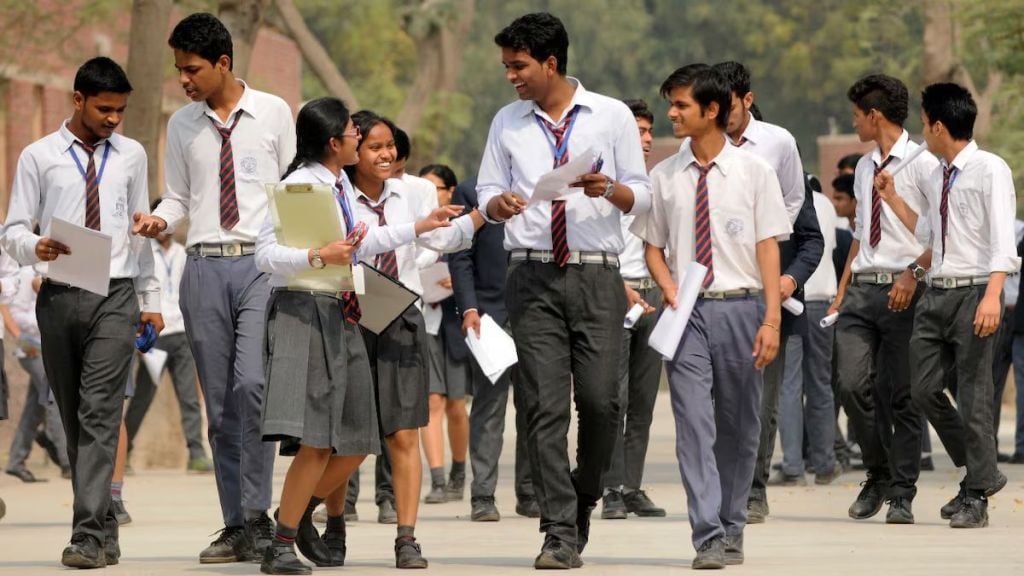By Badri Narayan
Education is one of the biggest desirables in a developing country like India. Post-1990, the Indian economy transformed into one that is neoliberal, centred around education, technology, and development mobility among both the rural and urban population. Education is a big dream, especially among the marginal, deprived, and poor sections of the population. Bhim Rao Ambedkar inspired these communities “to educate, agitate, and organise”. Gauging this deep desire of education among a large section of the populace, many parties developed their electoral politics around it.
The Aam Aadmi Party (AAP), led by Arvind Kejriwal, came to the political scene around 2010, and weaved its politics around the anti-corruption movement led by Anna Hazare. It formed government in Delhi in 2013, and has constantly remained in power since then. After first coming to power, it organised its electoral politics around providing access to quality education and healthcare for the masses. Mobilisation worked well in the party’s favour. To show education as an attractive mobilisational constituent of its politics, the state government proposed a design of the Delhi model of education after 2015, describing it as the “Delhi government revolution”. The central focus of this over-asserted model is on school education.
The AAP favoured developing physical infrastructure, preparing a trained and innovative teaching community, and a novel course restructuring for school education in Delhi. The Delhi government also enhanced its budget for the education model. Education as an emancipatory project for the poor and marginal communities also attracted intellectuals and journalists, both domestic and international. The Delhi government made special attempts to project its model of education prominently through the media and educational surveys by foreign rating agencies. It seemed to have paid off, providing an electoral dividend to the party in a big way. But just after a few years, the model started getting exposed by various agencies through their evaluation on multiple indicators.
On the indicator of school-classroom ratio, this model crumbled. It is reported that many Delhi government schools have 190 students in each classroom. Through various news reports, it came to light that some schools have a strength of 100 students in every classroom. However, Right to Education norms suggest that only 30 and 35 students should be in each primary and secondary classroom respectively. Owing to these big numbers, many students are forced to sit in the verandahs or stay at home during the monsoon. In one of the petitions filed in the Delhi High Court, it is argued that students get access to only two hours of teaching a day or are told to attend school on alternative days.
These factors affected the entire system of Delhi schools. It decreased the quality of teaching, making students disinterested. In recent years, the percentage of failures among students has increased — in a recent report, it was discovered that in Class 9th of Delhi government schools, 36% of students failed, and in 2022, 42% of such students dropped out. The collapse of the system of education which the AAP tried to build ended up making the students feel disillusioned.
These facts highlight the ground reality of the AAP’s claims on Delhi’s school education; however, it is still used as electoral capital. It is common knowledge that present-day politics mostly has nothing to do with ground realities, and everything to do with perception and narrative-building. Following this, “the Delhi education model” is being used by the party as one of the important constituents in its perception politics. Its IT cell, narrative-building groups, intellectuals, and media are still propagating the Delhi model as empowering and emancipatory. However, according to various media reports, studies, and petitions filed in courts, it has several known problems, contradictions, and failures.
Education should not be used as political capital. It is supposed to transform the present and future of communities. We, as citizens, need to follow the advice of eminent educationist Paulo Freire, who wrote the fundamental book on educating the masses, titled Pedagogy of the Oppressed. He wrote, “The more radical the person is, the more fully he or she enters into reality, so that, knowing it better, he or she can better transform it.” Using education as merely political capital may be disastrous for the future of the people, society, and the nation itself. The AAP and other political forces, who project themselves as the messiahs of educating the masses and changing lives of the oppressed and marginal communities, should start with reviewing the social impact of their claims, and ensuring that they live up to what they promise. As advocated by Ambedkar, education is one of the foundational elements for empowering people, especially from the marginalised communities. We need to embrace his dream delicately and sensitively. More importantly, parties should avoid using education for their political means and ends.
The author is Badri Narayan, Director, GB Pant Social Science Institute.
(Disclaimer: Views expressed are personal and do not reflect the official position or policy of Financial Express Online. Reproducing this content without permission is prohibited.)


